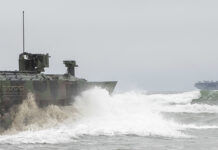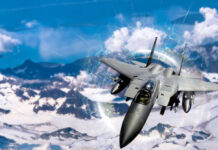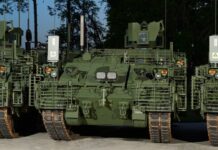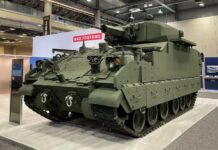Announced at the 2018 Farnborough Air Show with the unveiling of a first full-scale concept model, the programme for a Future Combat Air System (FCAS) is gaining momentum. After a complicated kick-off, mainly due to a limited commitment from Italy, the project, which is intended to deliver a 6th generation aircraft and the related ‘system of systems’, has gone international in 2022 with the participation of Japan, and is now well on track.
At the DSEI 2019 defence exhibition, Italy and the UK signed a Declaration of Intent to collaborate in the FCAS, followed by a Memorandum of Understanding (MoU) including Sweden in 2020. Rome and Stockholm thus decided to join London’s efforts for the development of an “international air project” intended to replace Eurofighter Typhoon from 2040. The UK was already advancing on a national programme for a 6th generation fighter, named Tempest in the UK, to be at the core of the FCAS system.
London has demonstrated its financial and industrial commitment since the beginning, and allocated significant funds over time. In April 2023, London pledged more than EUR 760 M to BAE Systems a part of a contract extension to progress in the “concepting and technology of the next-generation combat aircraft”, as the Ministry of Defence declared. This is part of a broader investment announced in the 2021 Defence Command Paper, consisting of more than EUR 2 Bn in funds to be pledged up to May 2025.

Credit: Leonardo
The programme progressed slowly in the initial phases, mainly due to the low financial participation of partners. Sweden signed up for the FCAS programme in July 2019 but was not formally included into the Tempest programme. In July 2020, Saab was awarded a contract for a preparatory study concerning the development of future fighter jet technologies. However, the government set 2025 as deadline to prepare its future combat aviation plans, thus putting the Swedish involvement in the FCAS programme “in hibernation”, as Saab’s President and CEO Micael Johansson said in August 2022.
Concerning Italy, the Defence Policy Document (Documento Programmatico Pluriennale, DPP) for 2020-2022 did not allocate any funds to the Tempest programme, but did so for the transition from Typhoon to Tempest fighters. However, the situation has slightly changed in 2021, when Italy openly affirmed its financial commitment to the programme. The DPP for 2021-2023 allocated EUR 20 M per year to the programme, likely to become EUR 30 M per year between 2024 and 2026. Concerning R&D funding, Rome firstly committed to EUR 2 Bn in funding over 15 years. This amount was revised upwards at the end of 2022, to almost EUR 4 Bn, a figure suggesting that the final R&D budget might be revised upwards.
The date of 9 December 2022 marked a key milestone with the launch of the Global Combat Air Programme (GCAP). With this partnership of equals, Japan aligned its requirements and schedule for its F-X programme with those of the UK and Italy’s Tempest. In the joint statement following the launch, the three prime ministers stressed the benefits of sharing the costs of investments in peoples and technologies, which will enable participants to support their sovereign capabilities. British PM Sunak stressed that the GCAP will allow the UK to “stay at the cutting-edge of advancements in defence technology – outpacing and out-manoeuvring those who seek to do us harm”.
Partners set 2035 as key official date for the entry into service. At DSEI Japan 2023, UK Defence Secretary Wallace, noted that all designs should be shared by 2025, thus kick-starting the development of the GCAP. The R&D phase has an estimated cost of EUR 6 Bn with the first flight of the fighter scheduled to take place in 2029.
Main Features
The GCAP, known as Tempest in the UK but still unnamed in Italy and Japan, will be a manned/optionally-manned, 6th generation fighter. For the UK and Italy, it will remain at the core of the FCAS technology system, which mirrors the approach brought by 5th generation aircraft. The cutting-edge F-35 flies further than its predecessors, and its remarkable features, namely fully fused sensor information, transform the pilot into a unitary decision-maker focusing on limited, yet essential decisions. Pilots receive comprehensive intelligence from the battlefield, rather than rough information to be aggregated and analysed, and are thus in charge of choosing the best solution among those automatically proposed by the system. The Multifunction Advanced Data Link allows for data sharing with the other platforms involved in the missions, such as modern and legacy strike aircraft, and aerial and ground-based platforms.
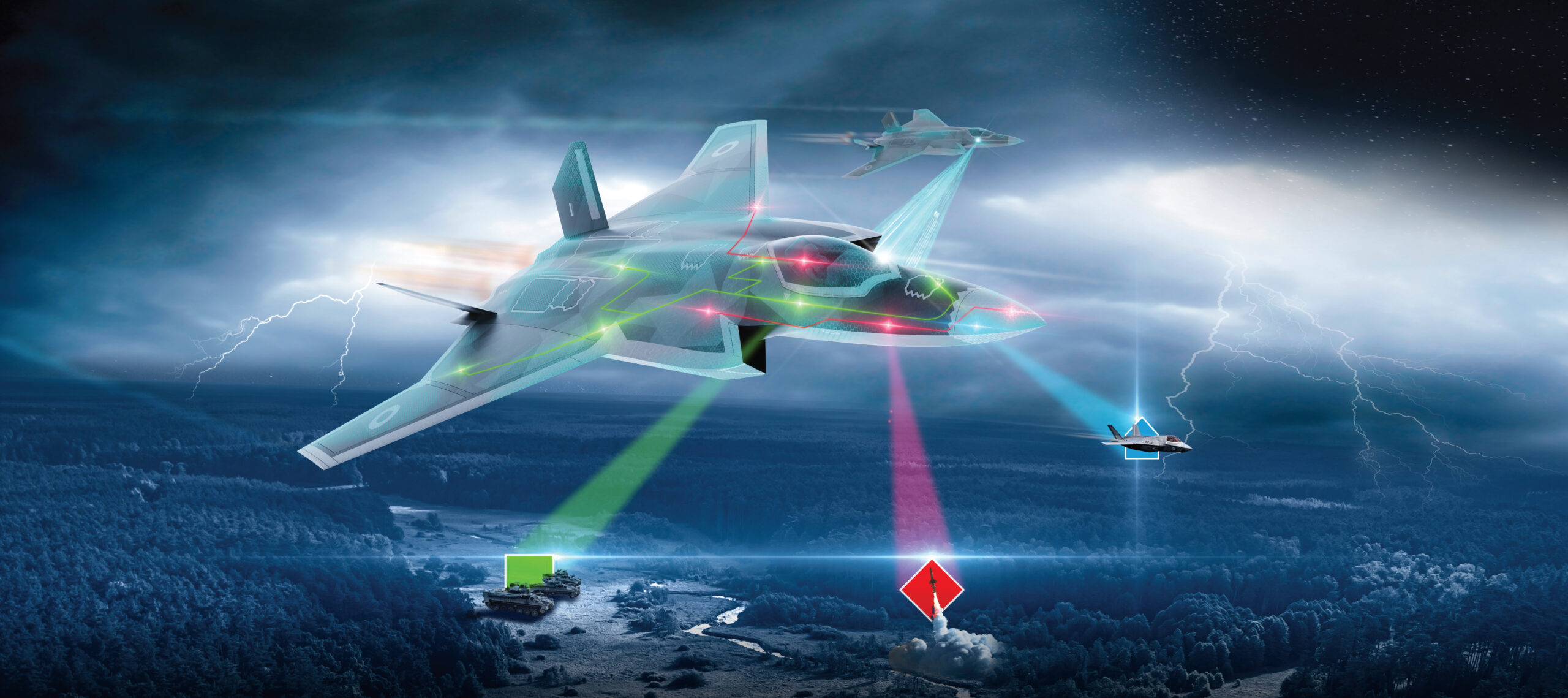
Credit: Leonardo
The fighter will likely incorporate most of the features outlined for the original Tempest programme, namely:
- A flexible, software-driven flight control system;
- An adaptable physical architecture with changeable software and hardware;
- A survivability design that provides a good balance among comprehensive situational awareness, low observability and significant payload;
- Scalable autonomy that includes manned-unmanned teaming;
- An efficient, electrical power system allowing for optimising the aircraft’s performance while limiting its thermal signature;
- A ‘wearable cockpit’ that controls pilot workload;
- Advanced integrated sensors, communications and effects;
- Advanced manufacturing with automated support options.
Leonardo, BAE Systems and Mitsubishi Heavy Industries (MHI) will work as ‘Lead System Integrators’. This means they will oversee all the airframe development and lead the programme in Italy, Japan, and the UK, respectively.
Current status
The GCAP programme took centre stage at the Japanese edition of DSEI exhibition, held in March 2023. On the government side, the three defence ministers held a meeting to reaffirm their commitments. For the next two years, the British, Italian and Japanese governments will focus on defining cost-sharing arrangements and to build up the programme’s governance. As of 2025, the GCAP is expected to enter its full development phase under a unique joint entity and common funding stream.
During the exhibition, Leonardo UK, ELT (formerly known as Elettronica) and Mitsubishi Electric Corporation signed their collaborative agreement for the development of the Integrated Sensing and Non-Kinetic Effects (ISANKE) and Integrated Communications System (ICS) suites for Tempest. Thanks to these advanced electronics on board, the GCAP core platform will be able to rapidly manage a large volume of data. By providing the aircrew with increased information and advanced self-protection capabilities, the system will enable “6th generation tactical sensing”, according to the official press release.
Integrated across all the operational domains, including space and cyber, ICS will allow ISANKE to operate as a network across a formation of manned and unmanned aircraft. During the exhibition, Masahiko Arai, Senior General Manager, Defense Systems Division, at Mitsubishi Electric, said that ISANKE & ICS will account for 25% of the GCAP budget, but provide more than 50% of the solution’s overall capabilities. The ratio is significantly different compared to legacy aircraft, were the electronics usually account for 10-15% of costs and capabilities.
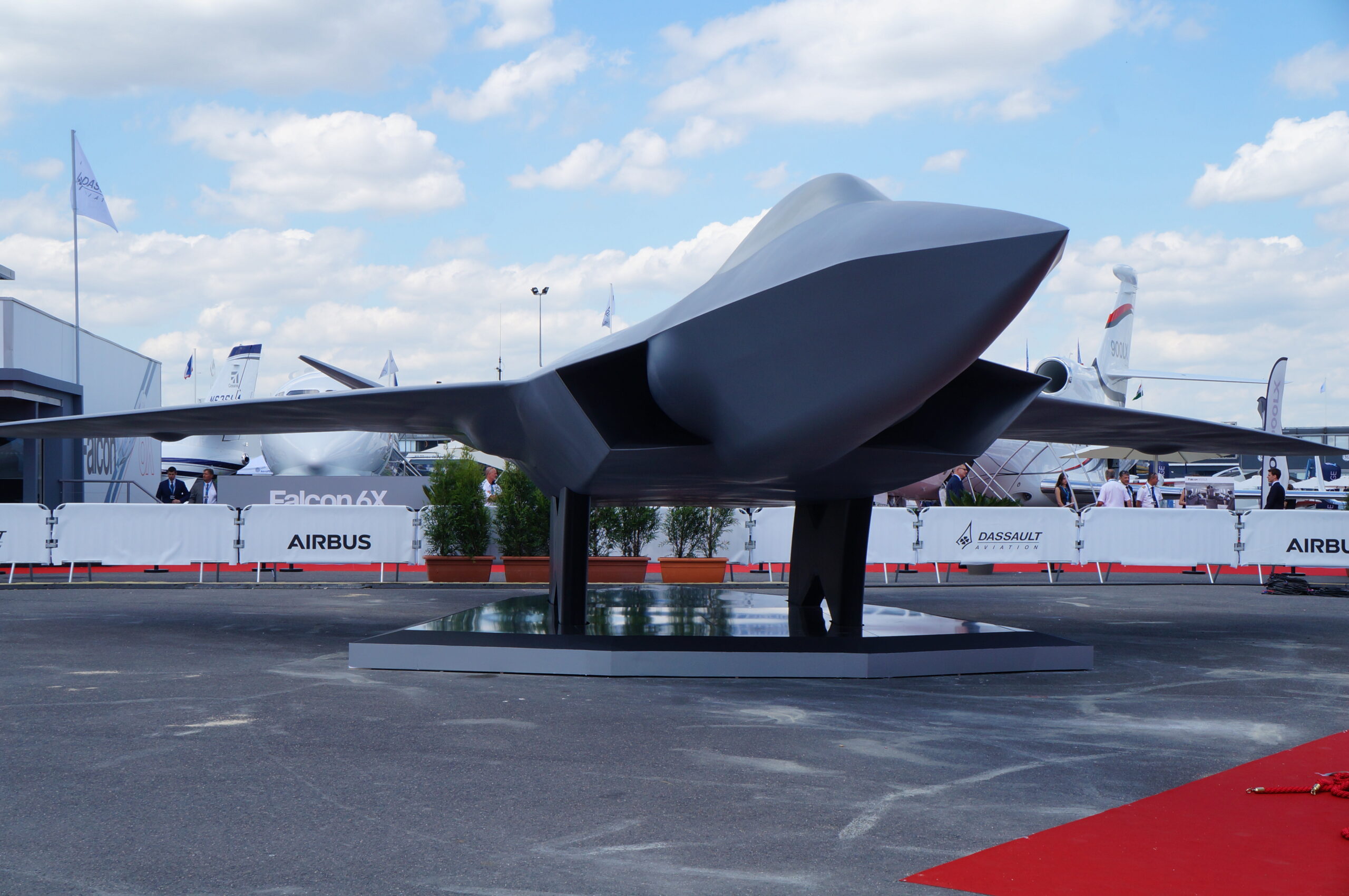
Credit: Giulia Tilenni
Rolls-Royce, IHI and Avio Aero agreed to pool their respective expertise to advance the design, manufacturing and testing of the future engine. In fact, the programme is revamping an existing collaboration between IHI and Rolls-Royce, which have been sharing defence equipment and technologies since 2013. In 2021, Rolls-Royce declared that the British Government had invested EUR 35 M in planning, digital designs, and manufacturing developments.
BAE Systems unveiled the latest version of its augmented reality cockpit concept for the GCAP during the Future Combat Air & Space Capabilities Summit held in London during May 2023. This latest update features a map that can be toggled from a 2D to a 3D perspective in Augmented Reality (AR). On that occasion, the company explained that the cockpit, which is to be personalised for each individual, will include biometrics, eye tracking and stress monitoring to sense whether the pilot is overwhelmed.
In an update published on social media on 14 July 2023, BAE Systems illustrated the main advancements of the programme on the British side. Test pilots from the company, Rolls-Royce and the Royal Air Force have already flown 150 hours on a bespoke simulator, to provide evidence that will support flight trials. BAE’s engineers have already created safety-critical systems software, thus enabling a rapid assessment of the flight control systems during the flight in the simulator. This allows crucial data to be collected on how the jet will handle and perform in complex manoeuvres. Aerodynamic engine testing is also ongoing, as well as ejection seat trials, held in cooperation with Martin Baker.
New Industrial Approach
Partner companies are working extensively to maximise investments while keeping the deadline and the programme’s ambitions unchanged. A difficult balance considering the complexity of the programme they are working on, but that might finally be managed thanks to a profound transformation of the working environment and a new approach to management.
During an event organised by the Royal United Services Institute (RUSI) in January 2023, the UK Future Combat Air Director at the MoD, Richard Burton, reaffirmed that the partners were building on the lessons learned from previous multinational cooperative programmes, such as the Lockheed Martin F-35 Lightning II Joint Strike Fighter project and the Eurofighter consortium. For instance, the involvement of the NATO Eurofighter and Tornado Management Agency (NETMA) has slowed down the pace at which the Eurofighter was developed, and reduced the programme’s flexibility. Since NETMA was not powerful enough to manage the programme autonomously, companies and partner nations took over, but still needed NETMA to validate the different steps.
To remain on schedule, GCAP partners are seeking to establish deep synergies between government and industry to provide a fully joint international basis to the development contracts, set to be awarded in 2025.
According to Herman Claesen, FCAS managing director at BAE Systems, the structure might take the form of a joint venture with the capacity to act on behalf of the three governments involved. This means that, once any of the governments and industry partners have fixed requirements and priorities together, industrial partners will have a certain ‘freedom of action’ and ‘freedom of modification’ on the technical aspects of the programme.
GCAP will not only be managed according to a new structure but will also follow an innovative product design cycle. In 2020, Michael Christie, BAE Systems Director of FCAS said that the relevant stakeholders were in no rush to lock down a design or fly a demonstrator. Conversely, the focus was more on developing the relevant technologies and capabilities through model-based system engineering and design.
Tapping into the know-how of companies of all sizes, research centres, universities and start-ups, the development will try to apply the most innovative approaches available, such as the use of ‘digital twins’ or a ‘common working environment’. Thanks to digital design and model-based system engineering, ‘digital twins’ will make testing faster and cheaper. Savings are currently estimated at 50-70% on schedule and 25-35% of costs compared to legacy projects. The ‘common working environment’, currently under testing in three Leonardo facilities (two in Italy, one in the UK), means significantly less time is needed for data analysis. Once fully operational, the system will ease the collaboration among the different experts involved, even when working in different time zones.
The launch of the GCAP Acceleration Initiative launched by the Italian Ministry of Defence in collaboration with the Milan Polytechnic University, the National Organisation of Italian Companies for Aerospace, Defence and Security (AIAD), Leonardo, Avio Aero, Elettronica and MBDA, is another example of how the programme’s development might be sped up. Following an open innovation approach, the initiative launched over 40 technology exploration calls to propose solutions for the various components of the GCAP programme.
Effectors and Possible Commonalities with SCAF
As collaboration is a crucial characteristic of systems of systems, effectors play an important role in the programme’s architecture. Numerous countries are therefore working on the development of the so-called ‘loyal wingman’ (also known as ‘remote carriers’) to be integrated in manned-unmanned teaming projects. These transonic, unmanned aerial vehicles (UAVs) are aimed at providing increased capability, protection, survivability, and information to combat aircraft, mainly thanks to artificial intelligence (AI). To this end, they should be able to perform a range of reconnaissance or Suppression of Enemy Air Defences (SEAD) missions, autonomously (alone or in swarms) or playing a supporting role to manned aircraft.
The UK has been working on the development of ‘loyal wingman’ since 2015, with the Lightweight Affordable Novel Combat Aircraft (LANCA) programme. Launched in 2019, Project Mosquito was intended to develop a technology demonstrator of a UAV able to provide “additive capabilities” to manned combat aircraft. However, the Royal Air Force’s Rapid Capabilities Office (RCO) announced its end “beyond the design phase” in June 2022. The RCO and the Defence Science and Technology Laboratory (Dstl) preferred to explore smaller and less costly “additive” capabilities.
At time of writing, no details have been provided on GCAP’s effectors, and Japan has not identified which company will partner with MBDA UK and MBDA Italy on this part of the programme. However, this might be an area of commonality with the Système de Combat Aérien du Futur (SCAF) programme developed by France, Germany and Spain, considering that the contract concerning effectors has been awarded to MBDA France and MBDA Germany. The two branches are currently working on the development of an Expendable Remote Carrier (ERC) as part of the Phase 1B of the SCAF programme.
Speaking to journalists during the Paris Air Show 2023, Grégoire Faron, MBDA’s programme manager for the SCAF programme, explained that the company is focusing on the development of a full-scale demonstrator ERC with a compact and modular design, possessing a very large subsonic operating envelope and equipped with a datalink and collaborative functions. The aerial vehicle will likely be around 4 m long, with a 400 kg weight and a 1-hour endurance.
Questioned on the possible commonalities between the GCAP and the SCAF programmes, MBDA’s representatives confirmed that this option was feasible from an industrial point of view.
Looking Ahead
According to Defence Secretary Ben Wallace, the GCAP programme will “bridge” Europe and the Pacific, opening new technological and export opportunities expected to last for decades.
Indeed, the companies involved are using the programme as a testbed to develop numerous technologies and development processes. This will allow them to increase their respective know-how in the defence sector, with an interesting spillover effect on the global knowledge and the workflow’s optimisation for hundreds of companies in the three countries. Looking at the UK only, the whole programme involves almost 600 organisations and 2,800 people, and Team Tempest (BAE Systems, Leonardo UK, MBDA UK and Rolls-Royce) is working on the maturity of about 60 technology demonstrations, digital concepts, and new technologies.
GCAP is also a great technical challenge: this is the first time that partner companies are working on a 6th generation fighter, and an aircraft that will be part of a system of systems. European companies, as well as Japanese ones, have not worked on 5th generation fighters. However, the UK, Italy and Japan are familiar with the F-35 and the new approach that this fighter brings to the battlefield. This might bring them a competitive advantage compared to France, which flies an upgraded version of 4th generation fighters, and Germany, which should reach its initial operational capability (IOC) on the F-35 in 2028.
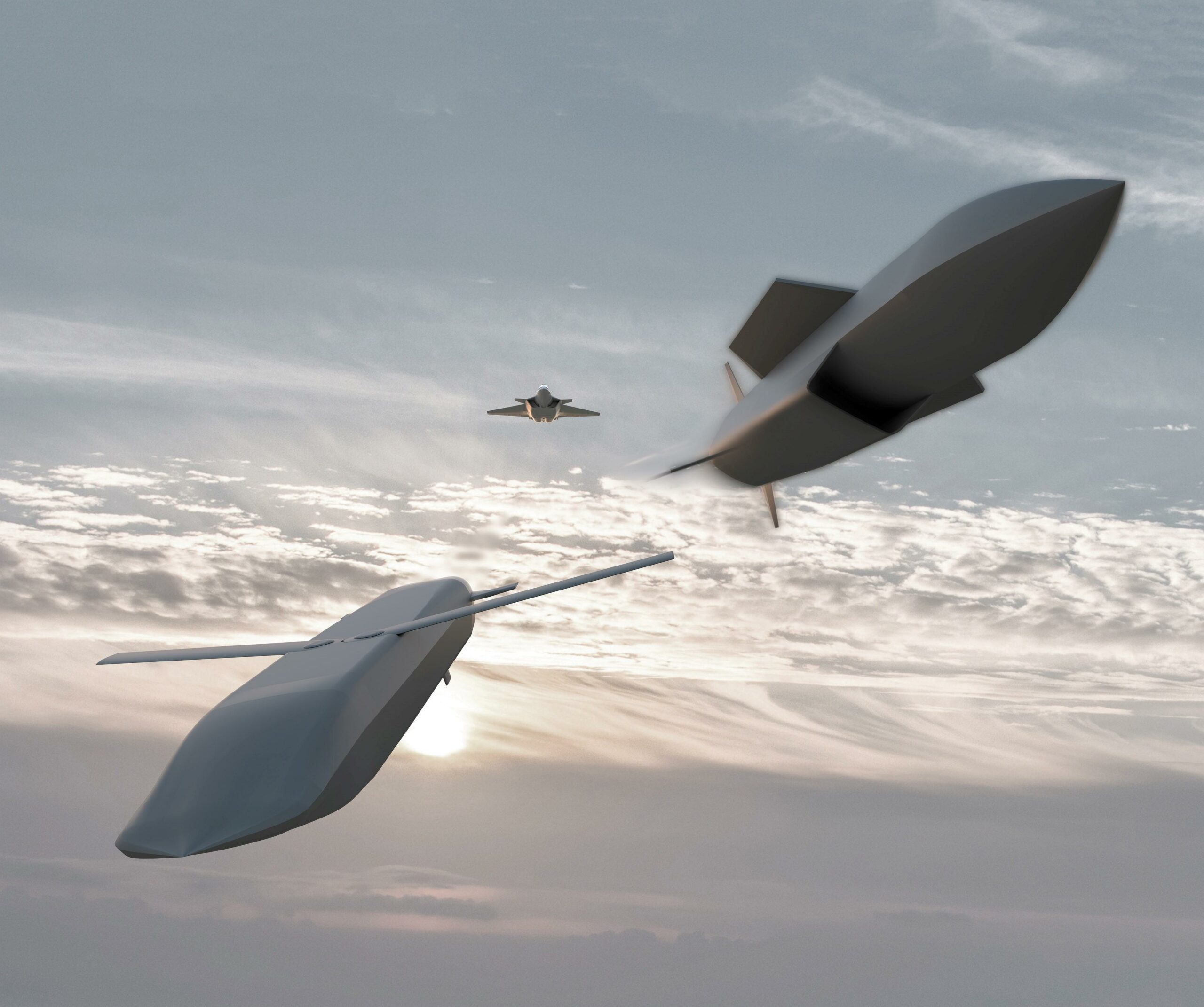
Credit: MBDA
Considering the status of the two programmes, GCAP might end up more successful than its European competitor. However, keeping a consistent political commitment to the programme will be the key for its completion. The programme is currently on schedule after difficult debuts, and the three countries have officially reaffirmed their engagement several times in the last months – the last time in Rome during June 2023. Working on several defence programmes at the same time might prove difficult, especially for Italy – which, according to speculation, might fund only one fifth of development costs.
Similarly, the UK’s National Audit Office (NAO) in its ‘The Equipment Plan 2021 to 2031’ report published in February 2022 cautioned that the budget for FCAS “is considerably less than the project team’s estimate of the cost needed over the next 10 years” and that “affordability of the Department’s plans will depend on the extent it is able to share development costs with international partners”. Yet the potential economic benefits of GCAP should convince the three capitals to remain on track.
The innovative governance of the programme might be another wildcard. The establishment of a joint structure with joint funding but leaving a certain degree of autonomy to industrial partners seems a convincing management model. It might effectively help the programme remain on schedule, but its effectiveness will have to be tested. Moreover, the number of partners might still change, as preliminary conversations are ongoing with Saudi Arabia to eventually cooperate on GCAP.
The market outlook might also be a challenge for GCAP. The programme is intended to replace the British and Italian Eurofighter Typhoon fleets, as well as the Japanese Mitsubishi F-2 fleet. However, no procurement estimates have been disclosed yet, and export perspectives remain unclear.
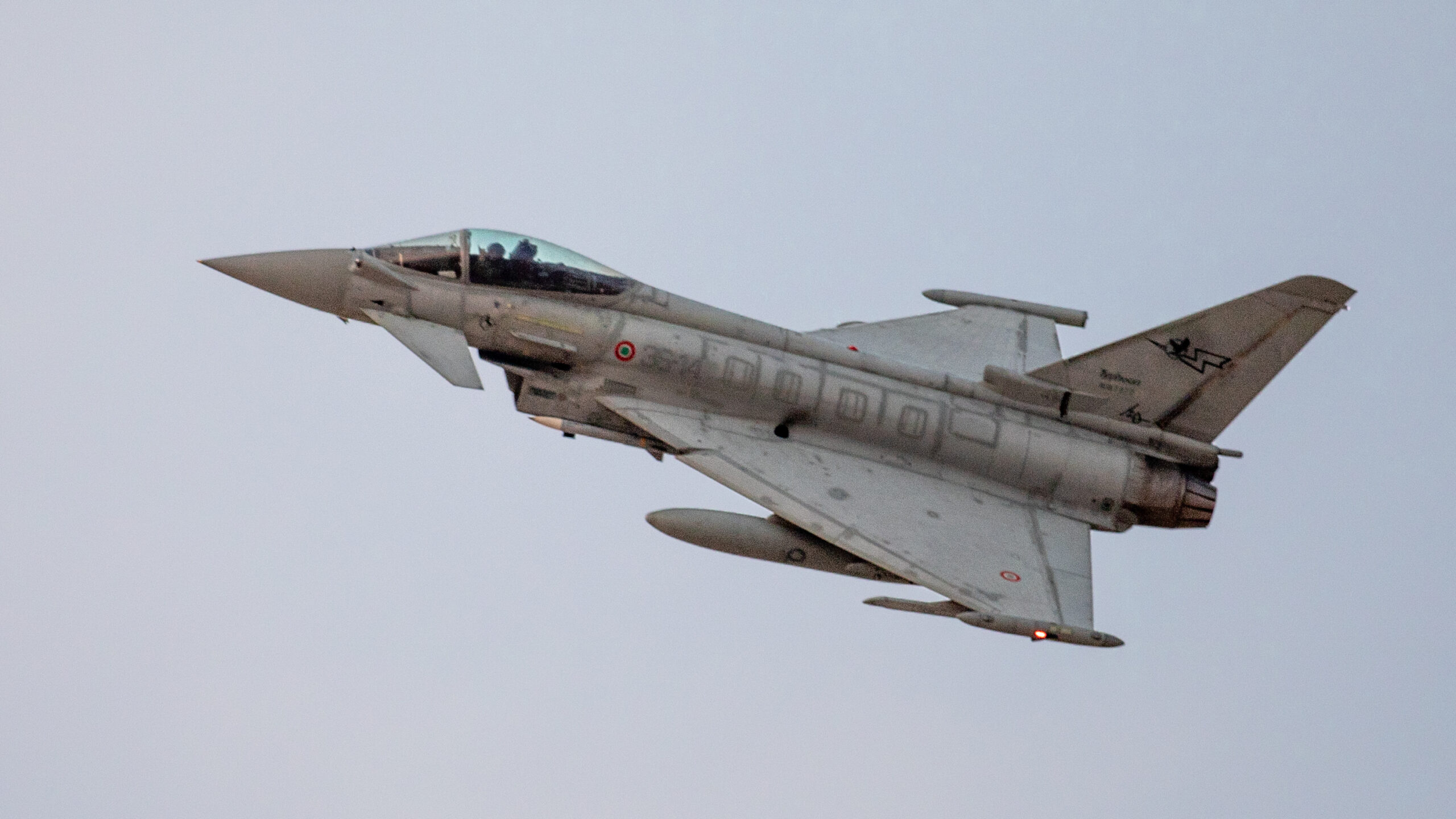
Credit: USMC/Sgt. Kyle C. Talbot
In Europe, the number of countries seeking a medium-term solution to replace their fleet of fighters is limited: Finland, Switzerland and the Czech Republic procured the F-35 in 2022, while Croatia and Greece chose Dassault Rafale. A lot will therefore depend on the completion of the SCAF and on Sweden’s decision regarding the eventual development of an indigenous fighter.
During a meeting with the media at BAE Systems’ assembly plant in Warton at the beginning of July 2023, Claesen said that an export analysis is ongoing. Considering the possibility to adapt solutions for export customers, BAE Systems expects orders for several hundred platforms. In the meantime, Japan’s ruling parties are working to review the restrictive national regulation on weapons exports.
Guilia Tilenni







